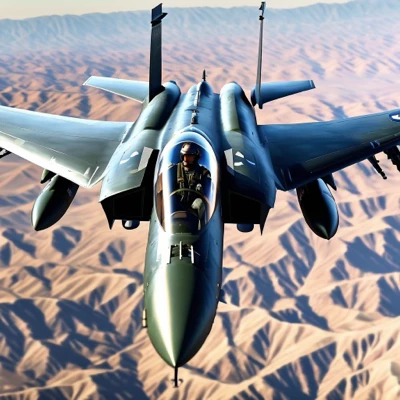Sexual Harassment vs. Article 120c: What’s the Difference in UCMJ Law?
Gonzalez & Waddington, Attorneys at Law represent service members worldwide accused of sexual harassment and Article 120c indecent conduct. Many service members—and even commanders—confuse these two areas of law. While both deal with sexual misconduct, the legal definitions, processes, and consequences are very different. This guide breaks down the key differences so you understand what’s at stake and how to defend yourself.
What Counts as Sexual Harassment in the Military?
- Definition: Unwelcome sexual advances, requests for sexual favors, or other verbal/physical conduct of a sexual nature that creates a hostile or offensive work environment or involves quid pro quo (favors for benefits).
- Governed by: Equal Opportunity (EO) regulations, DoD policies, and administrative processes.
- Proof standard: Preponderance of the evidence (more likely than not).
- Process: Investigated by EO officers or command-directed investigators; findings are administrative.
- Consequences: Counseling, letters of reprimand, adverse evaluations, nonjudicial punishment, or separation boards. Rarely goes to court-martial.
What Counts as Article 120c Misconduct?
- Definition: Covers indecent exposure, indecent conduct, and indecent viewing/recording without consent.
- Governed by: The Uniform Code of Military Justice (UCMJ), Article 120c.
- Proof standard: Beyond a reasonable doubt—the same as in civilian criminal courts.
- Process: Investigated by CID, OSI, NCIS, or CGIS; prosecuted at NJP or court-martial.
- Consequences: Punitive discharge, confinement, sex offender registration, and loss of military benefits.

Key Differences Between Harassment and 120c
| Aspect | Sexual Harassment (EO) | Article 120c (UCMJ) |
|---|---|---|
| Governing Law | EO regulations, DoD policies | Uniform Code of Military Justice |
| Proof Standard | Preponderance of evidence | Beyond a reasonable doubt |
| Investigators | EO officers, command-directed investigators | CID, OSI, NCIS, CGIS |
| Consequences | Counseling, reprimands, separation boards | Confinement, punitive discharge, registration |
| Forum | Administrative, not criminal | Court-martial or NJP |
When Harassment Becomes Article 120c
Some misconduct can start as harassment but escalate into 120c charges. For example:
- Unwelcome sexual jokes (EO) + sending explicit photos (120c indecent conduct).
- Flirtatious comments at work (EO) + secretly recording in a latrine (120c indecent viewing).
- Supervisor pressuring a subordinate for a date (EO) + exposing themselves (120c indecent exposure).
Key takeaway: Harassment is usually administrative, but if conduct becomes more explicit or involves exposure, viewing, or recording, it can lead to UCMJ criminal prosecution.
Defense Strategies
- For harassment: Show context, mutual joking, lack of sexual intent, or immediate correction once a boundary was clear.
- For Article 120c: Challenge intent, prove consent, attack digital evidence, and highlight lack of corroboration.
- For overlap cases: Force the command to clarify whether the conduct is administrative or criminal, and fight scope creep.
Common Mistakes Accused Service Members Make
- Assuming harassment allegations “don’t matter” because they’re administrative—reprimands can end careers.
- Talking to EO investigators without counsel—statements can be used in UCMJ prosecutions.
- Deleting texts or photos—creates appearance of guilt and spoliation issues.
- Failing to push back when harassment cases are unfairly escalated into UCMJ charges.
Video: Sexual Harassment vs. Article 120c
Don’t Confuse Harassment with Article 120c — The Stakes Are Different
Sexual harassment allegations can derail a career. Article 120c charges can end your freedom. We build evidence-driven defenses tailored to whether you’re facing EO, UCMJ, or both. Don’t face these cases alone.
Gonzalez & Waddington — ucmjdefense.com — 1-800-921-8607
FAQs: Sexual Harassment vs. Article 120c
Is sexual harassment always a criminal offense?
No. It’s usually handled administratively under EO. It only becomes UCMJ criminal when it involves indecent exposure, viewing, or conduct.
Can I face both EO and UCMJ at the same time?
Yes. An EO finding doesn’t shield you from criminal charges, and UCMJ prosecution doesn’t automatically dismiss EO actions.
What’s harder to prove—EO harassment or Article 120c?
EO harassment uses a lower proof standard (“more likely than not”). Article 120c requires proof beyond a reasonable doubt.
Do EO findings affect promotions?
Yes. Even without a conviction, EO findings often lead to reprimands or adverse evaluations visible to promotion boards.
Do Article 120c convictions require registration?
Often yes. Many 120c offenses (indecent viewing, exposure) require sex offender registration depending on jurisdiction.



